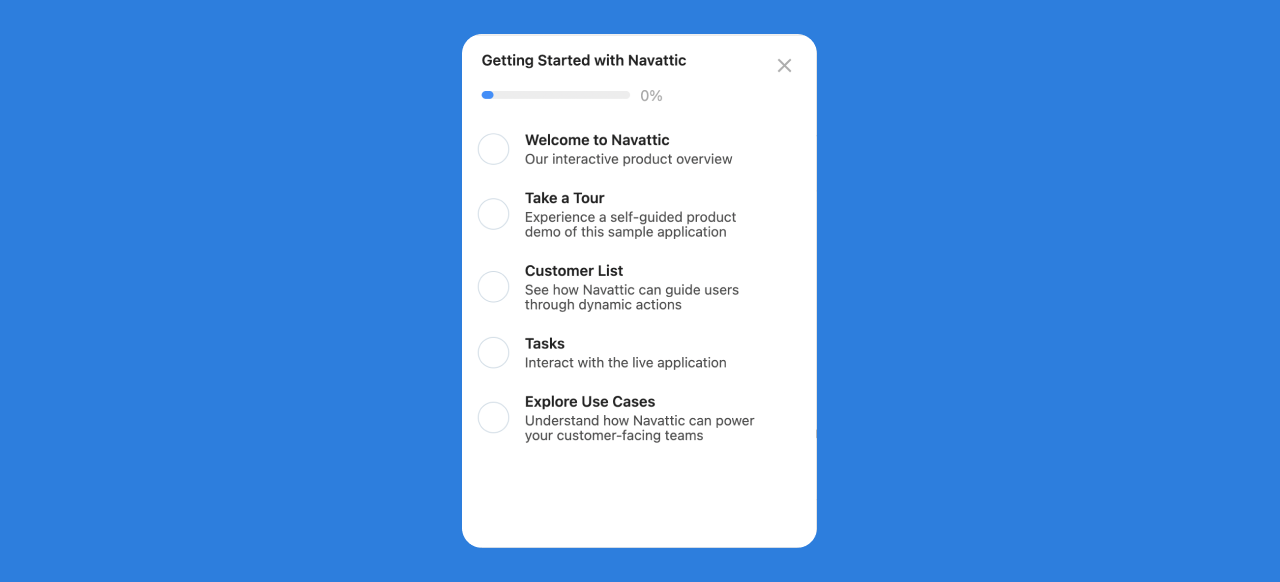Where Do Website Product Tours Fit in Your Marketing Stack?

CEO, Co-Founder

Without a doubt, SaaS buyers' expectations have shifted, especially those looking for marketing solutions. Today, marketers expect to have a more hands-on experience when testing a platform before committing to a lengthy subscription.
Not so long ago, sales-led demos were the only way to see the product until upstarts like Dropbox and Slack proved to the entire industry that software companies could grow revenue significantly with a new product-led methodology.
One of the key facets of this approach is allowing users frictionless access to the product. After all, one of the main reasons users come to your website is to learn more about how your product works and the value it provides.
To meet this need, marketing teams are increasingly implementing interactive product tours that can be embedded right on the marketing site. Not only does this help engage casual website visitors, but it also helps prospects by allowing them to better assess whether the product will meet their needs, faster.
With that said, let’s explore how an online product tour fits in the marketing stack.
What is an interactive product tour?
Let’s start with the basics. Interactive product tours are guided demos that allow prospects to "test drive" the solution without needing to set up an account or complete onboarding.
Without a salesperson interrupting their experience, prospects can explore and engage with the platform. In this way, prospects can determine for themselves if the product will meet their requirements without having to go through a process that’s time intensive on both parties.
If the product is a fit for the buyer, it also means they can come to the first call with the vendor prepared to ask detailed, use-case specific questions and potentially, close on that very first call.
Where does a website product tour fit within the marketing stack?
With its ability to generate strong leads for software teams, the website product tour is a unique addition to the marketing tech stack.
Traditionally the categories are:
- Awareness
- Tools like Linkedin, Twitter, Google AdWords, On24 & more
- Website
- Tools like Instapage, Optimizely, Pantheon, Smartling & more
- Data Management
- Marketo, Clearbit, Alexa, Salesforce, Hubspot & more
- Engagement
- AdRoll, Customer.io, Segment & more
- Measurement
- Google Analytics, Tableau & more
The product tour sits at an interesting place in this stack. At first glance, you could categorize tools like Navattic that help you build interactive product tours as fundamentally, a tool designed for engagement. Engagement and lead conversion are key value materics.
On the other hand, if you capture a set of leads, data management also comes into play.
While it’s still under debate, we lean towards placing interactive demo software in the “engagement” component of the marketing stack.
How can a product tour help bring in more leads?
So, why build a website product tour in the first place? First off, it’s a great way to give marketers the tools and software platforms they need to succeed, particularly when it comes to increasing lead generation as well as lead quality.
Product tours reduce the buyer's friction as much as possible, and allow a previously untapped form of engagement to come to fruition. When SaaS vendors can cut down on the time-to-value metric, it's more likely that prospects will convert and gain a favorable opinion of the brand much faster than a salesperson could achieve the same outcome.
Along those lines, marketing teams can cleverly place calls to action at specific moments to allow warm prospects to move on to the next stage in the buying cycle and directly chat with sales.
It's a practical and affordable marketing tactic that world-renowned startups have already shown works incredibly well, especially when the goal is to increase the pace of lead generation.
One question that follows is, what kind of product tour should we build?
One way to develop a product tour is to adopt a use case-based approach, but the marketing team needs to have a highly targeted buyer persona at the ready. Otherwise, there will be diminishing returns if the tour gets published as-is, out of the box with no targeting.
When SaaS companies have a clear picture of their ideal buyer, they can tailor online demos far better than taking the spray-and-pray approach.
But best of all, a well-designed product tour essentially allows prospects to educate themselves on the solution, empowering them with the ability to make a choice without any light sales coaxing.
How can product tour data contextualize leads?
For starters, there can be multiple user experience paths in a single demo. The goal is to get away from sifting through mountains of traditional marketing data on clickthrough rates and correlating those numbers with buyer personas.

On the flip side, product tour data can help inform SaaS vendors about who their target customers are not rather than who they are.
It's the ability to sort out cold prospects who have no purchasing intent and are simply window shopping solutions that matter most.
Ultimately, product tours will become a must-have type of collateral to scale lead generation and drive prospect engagement.